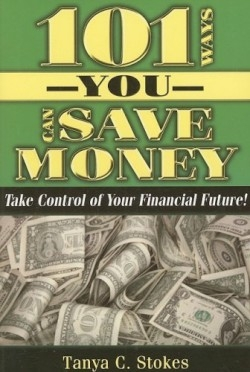101 Ways You Can Save Money
This book’s appeal lies in the fact that it is based in the practical experiences of a woman who has “been there and done that” and the clever layout and format make the book accessible. Divided into five sections “Cashflow Management” “Budgeting” and “Purchasing Strategies” sections covering more ground than the “Debt Reduction” and “Investments” portion of the book. Spot illustrations sum up the main points of various chapters. Each chapter ends with a space designated for the reader’s notes.
Billed as “The World’s Most User-friendly Money Saving Guide” many of the chapters have catchy titles that are easy to remember such as “Back Out of Being a Back Up” (take care when helping people in financial crises) and “Dump the Lumps” (place unexpected windfalls into your savings account).
The author a busy wife mother and entrepreneur wrote this guide to share what she has learned about money management and to keep others from repeating some of her errors. The tone is friendly and the book is filled with personal anecdotes although the biblical allusions may be lost on some readers. The personal touch is good but also has its risks. Since Stokes is not a financial expert the stories from her life are very specific but the general advice often seems vague. The book is good for advice topics like how to save on everyday purchases but comes up short in solid financial counsel.
And like a friend encountered frequently there is a tendency towards repetition. In trying to reach the book’s stated promise of 101 tips the writer separates ideas into more than one chapter when they could have been combined. A chapter on buying bottled water in bulk follows an earlier chapter on buying generally in bulk. It’s good that the chapters are short enough to cater to the short attention span of today’s reader but some chapters are too short and not fully developed.
Personal money management is a subject that is not taught in high school or college. One must gain this wisdom through life lessons. Stokes’ book is a good choice for someone who has had little help from family and friends in managing their money. After starting here the reader can then move on to financial books that provide more structured and in-depth advice.
Disclosure: This article is not an endorsement, but a review. The publisher of this book provided free copies of the book and paid a small fee to have their book reviewed by a professional reviewer. Foreword Reviews and Clarion Reviews make no guarantee that the publisher will receive a positive review. Foreword Magazine, Inc. is disclosing this in accordance with the Federal Trade Commission’s 16 CFR, Part 255.

